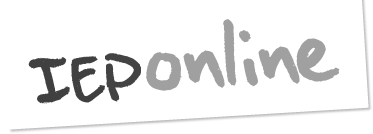Assessment – what, who, and how
What
The overall purpose of assessment is the same for all students, including those with special education needs.
The primary purpose of assessment is to improve students’ learning and teachers’ teaching as both student and teacher respond to the information that it provides. (The New Zealand Curriculum, 2007)
Assessment for learning
Assessment is a process of learning for learning.
It does not occur in isolation, nor is it an end in itself. It helps to plan next learning and teaching steps. Effective assessment, as described in The New Zealand Curriculum:
- benefits students
- involves students
- supports agreed teaching and learning goals
- is planned and communicated
- is suited to the purpose
- is valid and fair.
Who
Assessment for students with IEPs generally involves more people than assessment for other students. Most if not all members of the IEP team contribute to the process.
The role of the student in assessment is vital though often not fully recognised. Student self-assessment offers powerful feedback to teachers about their teaching. It also empowers students to take more responsibility for their learning.
Parents/caregivers and other whānau, hapū, iwi, and community members have lifelong experience of the student and can provide invaluable information about them in different contexts.
Specialists bring broad experience of students with similar special education needs across a range of settings. They are likely to offer a wealth of strategies to support the student and wider IEP team.
How
The IEP team – precisely because it is a team – is in a perfect position to draw on information from a range of assessment sources, both informal and formal. Contributions from all team members are valuable and should inform future teaching and learning.
Sources of assessment information might include:
- day-to-day activities such as learning conversations
- structured interviews with the student or structured observations in various settings
- quick notes taken by the teacher during informal observations
- student self-assessments and peer-assessments
- detailed analyses of the student’s work by teachers and other team members
- portfolios of the student’s work, including ePortfolios
- specialists’ reports
- observations or records put together by parents/caregivers or other whānau
- narrative assessment.
Overall teacher judgments
Overall teacher judgments of achievement and progress are central to assessment for learning.
They involve collecting and interpreting assessment information from a variety of sources, using a range of approaches.
Evidence may be gathered by:
- conversing with the student to find out what they know, understand, and can do
- observing the process a student uses
- gathering the results from formal assessments, including standardised tools.
Narrative assessment
Assessment for Learners with Special Education Needs (2009) - this document can be downloaded from the Assessment Onlinesite.
An effective approach to assessing students with significant special education needs is narrative assessment.
Narrative assessment uses learning stories to capture progress in students’ learning. It “records the often subtle interactions between the student, their learning environments, their peers, their learning support team, and their learning activities.”

